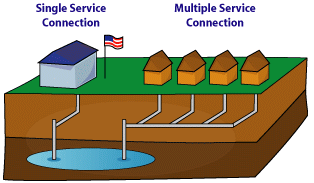Course Glossary
This shows the specialized terms used in EarthWise Academy. This section contains all the definitions used in the various course glossaries used by each course.
| All categories |
DRINKING WATER |
|---|
MCL
|
MCLGMCLG – Maximum Contaminant Level Goal The level of a contaminant in drinking water below which there is no known or expected risk to health. MCLGs allow for a margin of safety.
|
Microbial/Disinfectants and Disinfection ByproductMicrobial/Disinfectants and Disinfection Byproduct – (M/DBP)
|
Microflocs
|
MLSSMLSS – Mixed Liquor Suspended Solids The concentration of suspended solids (both organic and inorganic) in the mixed liquor of an aeration tank. MLSS is used as a measure of the concentration of microorganisms present. |
Monitoring and Reporting ViolationAny violation incurred for failing to monitor and/or report for a regulated parameter specified by the Pa. DEP.
|
Monitoring PeriodThe time frame, generally in months, quarters, or years, during which water samples must be collected and tested in accordance with Pa Safe Drinking Water Regulations to determine compliance with applicable MCLs, MRDLs, or treatment techniques
|
MRDLGMRDLG – Maximum Residual Disinfectant Level Goal The unenforceable maximum level of disinfectant added for water treatment for which there is no known risk to human health.
|
Multiple Service ConnectionThis refers to the condition where a PWS serves many individual buildings (connections), i.e., homes or businesses that use public water.
|
N/A Site
|
